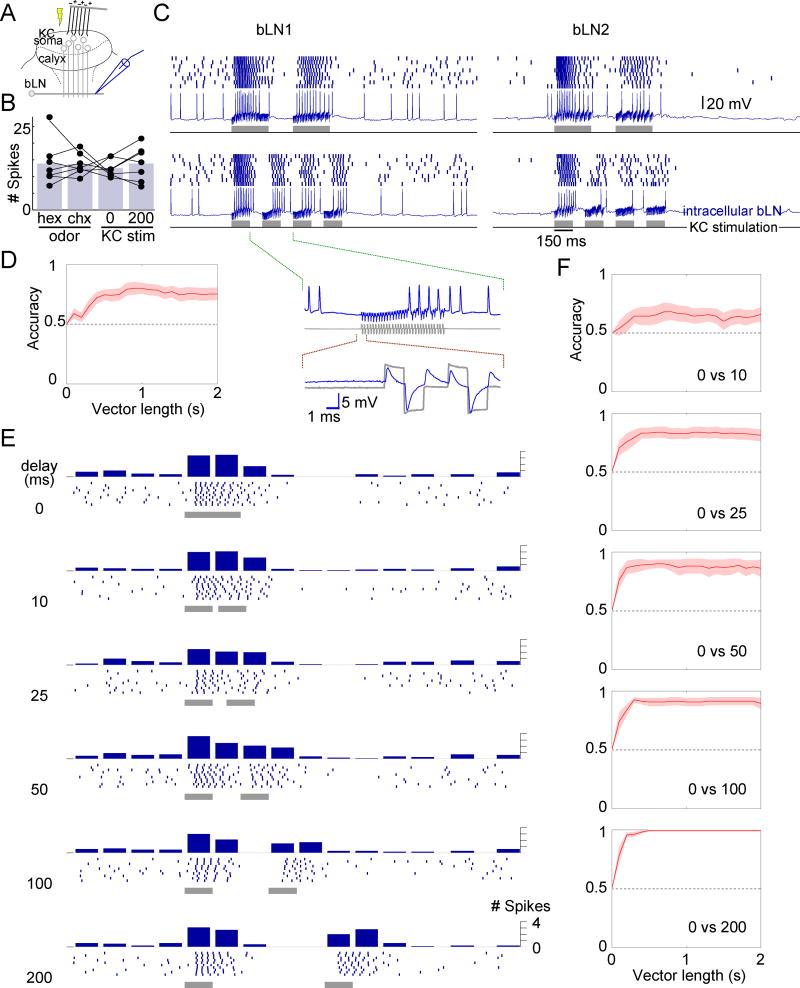Figure 5.
bLNs are sensitive to changes in the absolute timing of KC activation. (a) Experiment setup. (b) KC stimulation (a pair of 50-ms pulses separated by 0 or 200 ms delay, see panel e) evoked similar numbers of spikes in bLNs (counted in 500 ms from stimulus onset) as did 100-ms pulses of odor (chx or hex) in the same bLNs (n = 7, F(3,24) = 0.14, p = 0.93, one-way ANOVA); bars show means. (c) Responses of representative bLN1 and bLN2 neurons to different temporal patterns of KC stimulation (600 ms total stimulation in both patterns). Inset: detailed view of the intracellular trace (blue) and the simultaneously recorded trace of the injected current (grey); note the artifacts caused by crosstalk between the stimulator and the recording instrument. These artifacts do not reflect direct activation of bLNs: the artifacts were precisely time-locked with the stimulus trains with virtually no lag (<0.1 ms) but appeared unrelated to spiking; both bLN1 and bLN2 showed similar artifacts even though only bLN2 has branches in the calyx. (d) A classifier can differentiate between the two response patterns in panel c with high accuracy (chance level = 0.5). Results obtained for different bLN classes were similar and were pooled (n = 15 bLNs). (e) Responses of a bLN to pairs of 50-ms pulses separated by different delays. Peri-stimulus time histogram of spikes (binned every 50 ms) is shown above rasters. (f) Accuracy of classification between 0-ms delay condition and other delay conditions (n = 8 bLNs). Shading shows s.e.m. See also Fig. S5.

